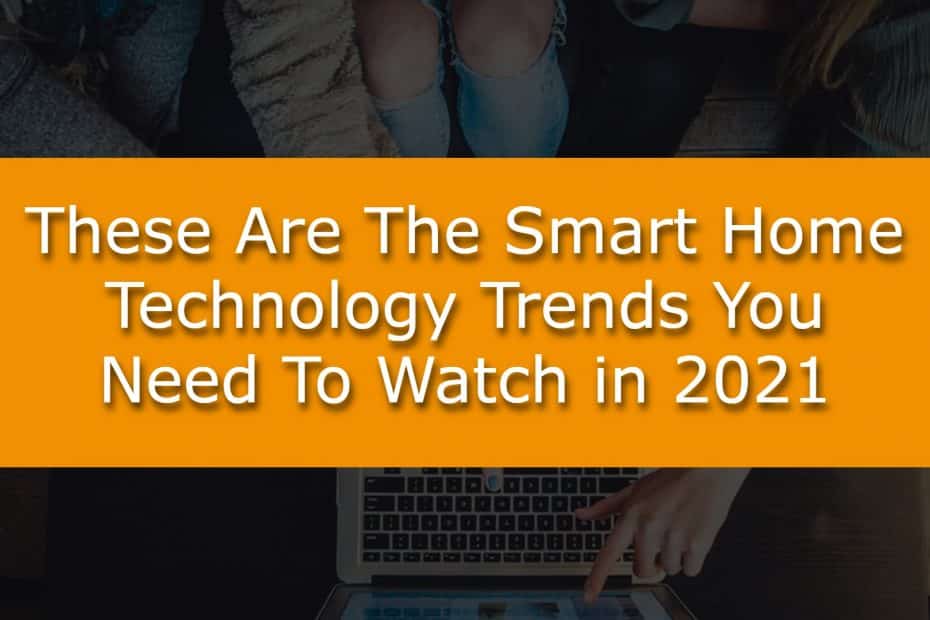Technology has continuously improved people’s lives. Digital technology, in particular, has transformed our everyday experiences. For instance, it changed how we communicate, entertain ourselves, receives education, and shop for goods.
Then came COVID-19. It has made people realize that they can do all of these inside their own homes. Perhaps this realization is what caused smart homes to skyrocket in popularity. These homes are filled with devices and appliances that grant homeowners comfort and convenience. They allow people to live in stress-free environments. That is something greatly appreciated in a time when there’s still the threat of the global health crisis.

Some industry estimates project north of 175 million smart homes in the world. You might think that’s high, but some experts think it seems low. They believe there should be more smart homes, considering the nonstop development, production, and release of new smart devices. Nevertheless, it is clear that the market for smart homes is still growing. Furthermore, it is about to see exponential growth – brought by new technologies – in the upcoming years.
Right now, smart home technology sits at a spot near mainstream adoption. It is not quite there yet. Jabil conducted a survey to paint a clearer picture of where it’s at. It aimed to pinpoint where it is headed and what are the roadblocks that manufacturers must overcome. The respondents are 215 Internet of things decision-makers from companies that produce smart home products.
According to these people, these are the five Smart Home Technology Trends for 2022.
Accelerating Growth Of Smart Home Technology Market
When asked what type of connected home solutions their companies are developing, manufacturers reported an increase in all types and volumes. And if you put this and 2018’s surveys side by side, you would see growth by a wide margin. Remarkably, participants reported almost all solutions are scoring 10% more sales volume than two years ago.
The survey revealed Security and Access Control as the principal focus. On the other hand, Hubs & Controllers and Health Management solutions both sit at the tail of the race. But, they are not that far apart.
Nine out of ten respondents admitted that the pandemic-related issues made a significant impact on sales. What we can draw from that is COVID made the industry do better when addressing uncertainty. But growth should not stop when the pandemic ends. Thus, management teams are adopting new supply chain procedures. Moreover, they are increasing the global footprint of their supplier base. On top of that, they are better at integrating technology for real-time visibility. In simpler words, more improvements are on the way.
Necessity Over Novelty
The “wow” factor of devices definitely helped boost the popularity of smart home technology. But, the world has moved on from that phase. People now focus on necessity more than novelty. They always ask, “Why do I need to use this product?”

With that said, products that offer obvious benefits will likely be the ones that will receive long-term traction. Thus, manufacturers that clearly articulate the benefits brought by their technology will become the big winners.
Better Interoperability
Under normal circumstances, in technology industries, being ahead of the curve is where you would want to be. But there’s a drawback that makes it difficult for smart home tech manufacturers to pull that off. The rapid pace of execution in this field causes a lack of interoperability.
There are requirements for a smart home to achieve full automation. All devices must be able to connect with each other, their controller, and the wireless connectivity system. The problem is, new technologies may not be able to connect to older ones. This is because of the absence of data communications standards.
Almost all of the survey participants agreed that the industry must set these standards for it to continue its growth.
With Regards To Privacy And Security
Of course, better interoperability means more data will be shared between devices. From this arises privacy and security concerns. First, there’s the increased risk of a data breach. Then, there are the homeowners worrying that the devices monitor their every move and sell their data.
To prevent homeowners from panicking and moving away from smart homes, manufacturers must inform them what data is being used by the device. But not only that. They should also tell consumers how they process the data.
Needless to say, the pressure falls on the original equipment manufacturers. They have to make better narratives on the benefits of this shared experience.
Fifty percent of the respondents believe the collected data can give birth to new solutions. Meanwhile, about 45% say preventative maintenance can be provided through proactive monitoring. In general, the more a smart solution knows about the homeowners, the more benefits they can enjoy. Manufacturers have to find a way to make homeowners understand this.
Products Aligning With Consumer Demand
Smart homeowners are tired of tired technical difficulties killing their enthusiasm for trying new products. Moreso, if the device looked very promising. Almost all participants of the Jabil survey admit that their solutions are facing connectivity issues. Furthermore, almost half of them say that device-to-internet connectivity is the issue that challenges their companies the most.

This causes manufacturers to focus their attention on solving this problem. The solution is to combine complex technology and a seamless, intuitive user experience. That may be easier said than done. But, they can be achieved through partnerships that can help plug gaps in your product development arsenal. These may be able to turn the frowns of consumers into wide smiles.
The Bottomline Smart Home Trends of 2022
People turn to smart homes for more comfort, control, and security. Thus, manufacturers must focus on making products that offer these. The smart home technology industry is still young and developing. But from what can be seen today, you can say that the future is smart. Here’s hoping that the industry overcomes the hurdles on its way to more growth. And here’s hope for a future filled with smart homes.
As we move into the 2022s, smart home technology is only going to become more prevalent. More and more homeowners are looking for ways to automate their homes and make their lives easier. Here are some of the most popular smart home technology trends you need to watch out for in the coming years:
1. Smart Home Security
One of the most popular reasons people invest in smart home technology is for security purposes. Smart security systems can include features like motion-activated cameras, door and window sensors, and even facial recognition technology. Homeowners are increasingly looking for ways to beef up their home security, and smart technology is one of the best ways to do it.
2. Smart Energy Management
Another popular trend in smart home technology is energy management. Homeowners are looking for ways to save money on their energy bills, and smart thermostats and light bulbs are a great way to do that. Smart technology can help you regulate the temperature in your home and turn off lights when they’re not needed, both of which can save you money on your energy bill.
3. Smart Home Convenience
Last but not least, homeowners are also looking for ways to make their lives more convenient. Smart technology can do things like open your garage door when you pull into the driveway, turn on the lights when you walk into a room, and even start brewing your coffee in the morning. If there’s a way to make your life more convenient with smart technology, chances are someone is working on it.
So there you have it – three of the most popular smart home technology trends to watch out for in the coming years. Home security, energy management, and convenience are all areas where smart technology can really shine. If you’re looking to invest in smart home technology, these are the trends you need to keep an eye on.
